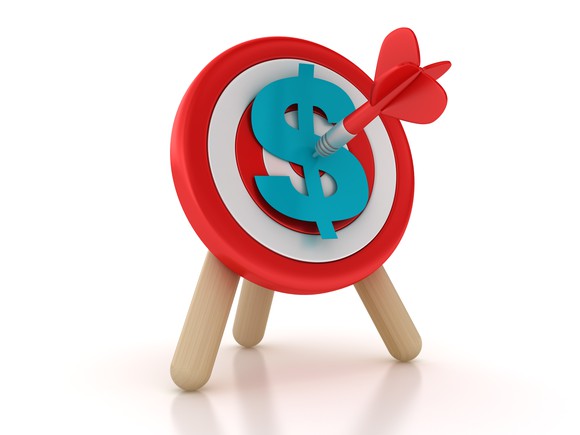Through early April, the IRS processed over 74 million tax returns where the recipients received a refund. Among those returns, the average one clocked in around $2,878. If you're among those who got a refund and you're still drawing a paycheck, then you likely have a really easy way to get more money quickly. In the coronavirus era of economic and employment uncertainty, every little bit of money you can get into your own pocket helps.
With what could be as little as 10 minutes of effort, you can potentially get your hands on hundreds of dollars more each paycheck, starting with your very next one. All you need to do is fill out IRS Form W-4 (or your employer's substitute) and file it with your payroll department. Form W-4 lets you adjust your federal income tax withholding. If you reduce the amount you have withheld, you increase the amount you take home every payday, at the cost of a smaller refund when you file your tax return next year.

Image source: Getty Images
How much larger can each paycheck get?
If you're at that average refund level of $2,878 and want to target breaking even when you file your taxes in the future, the table below shows about how much more you can get each payday. Of course, your own current withholding status will determine exactly how much you will get for your efforts.
|
Pay Frequency |
Increase per Paycheck |
|---|---|
|
Monthly |
$239.83 |
|
Twice a month |
$119.92 |
|
Every two weeks |
$110.69 |
|
Weekly |
$55.35 |
If you're worried about the IRS coming after you if you don't get it perfect, don't be. Nobody expects you to know your exact tax situation before you file your final return for the year. The IRS has a set of guidelines, known as safe harbor tests, that help you understand where "close enough is good enough" when it comes to your withholding.
As long as you pass any one of those safe harbor tests with your withholding throughout the year, you're OK to pay the rest of what you owe when you file your taxes by the deadline (typically April 15). You can even owe thousands of dollars, but as long as you're covered by a safe harbor and true up the rest of what you owe on time, you'll face no penalties or interest charges.
What are those safe harbor rules?

Image Source: Getty Images
There are three general tests. The most straightforward one is this: If you owe less than $1,000 after accounting for your withholding throughout the year, you're covered. This one is useful if your income is fairly steady year after year, and therefore you have a good feel for what your total income tax burden will be.
The second test is: If your withholding covers at least 90% of what you owe for the year, you're covered. This test is useful if your income is down year on year, such as if you're retiring midyear, receive a lower bonus, or wind up among the temporarily unemployed from coronavirus.
In the final test, you need to pay at least 100% of what you owed for the previous year (or 110% if your income is above $150,000, or above $75,000 and you're married and file separately). This is the only test where you can know well in advance exactly how much you need to pay and still be covered, no matter how much you end up earning. It's useful if your income is on an upward trend or swings wildly to where you have no idea what your total income will be until the end of the year.
Get more money in your pocket today
As that old saying goes, "A bird in the hand is worth two in the bush." Especially in a time of uncertainty, having more money in your pocket each payday is worth more than getting a larger refund a year from now. By using IRS Form W-4 or your employer's substitute, you can quickly get yourself set up to get more of your money every time you get paid.
It's one of the easiest ways you can get your hands on more money quickly. As long as you assure you're covered by one of the IRS' safe harbor tests, it's also one of the smartest tax planning tools at your disposal. So take the 10 minutes or so that you'll need to fill out the form and get it submitted to your payroll department. When you have more cash in your pocket each payday from making that change, you'll be very glad you did.